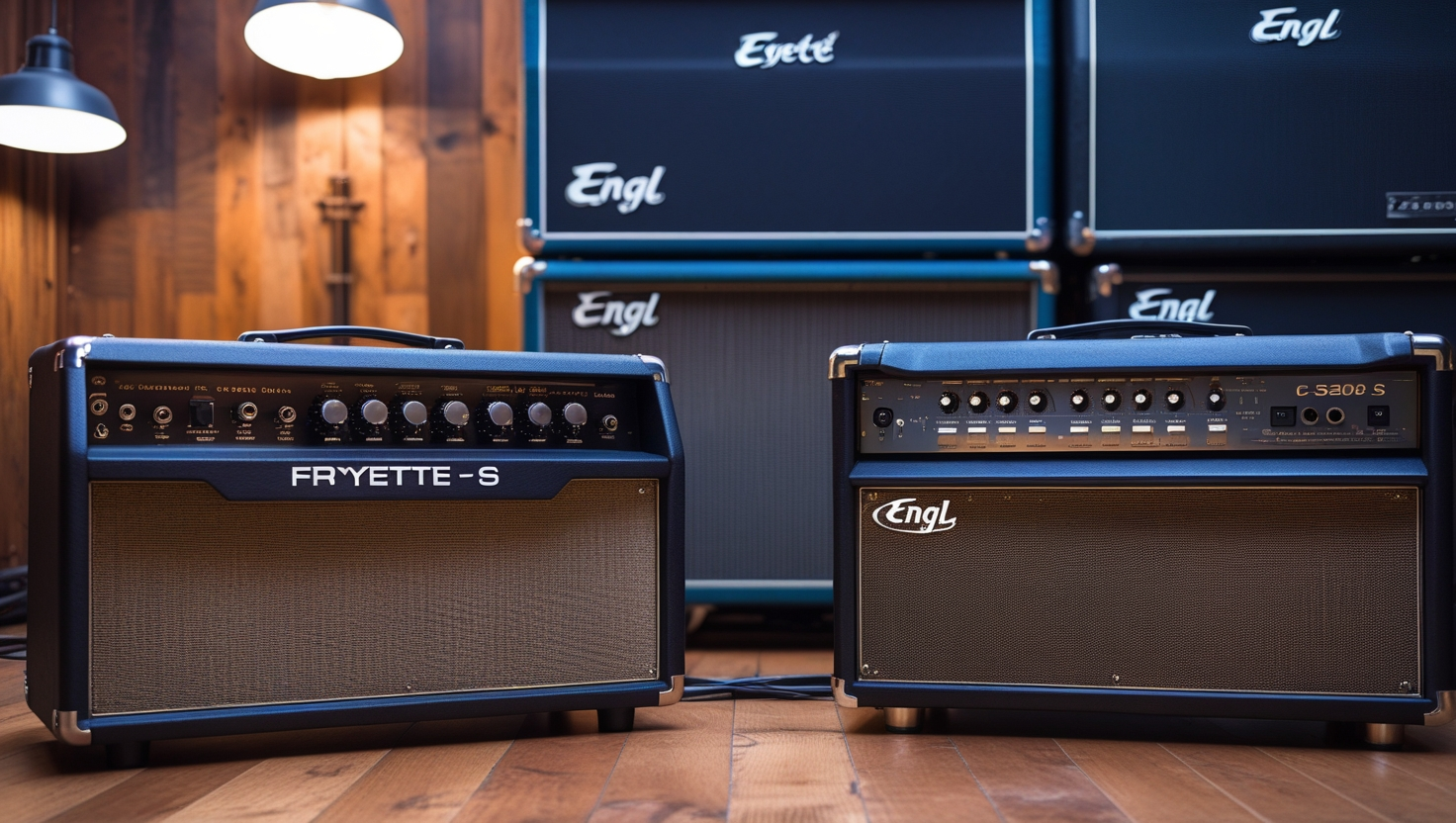Introduction
When talking about the power amplifiers for guitar rigs, musicians often consider two well-known models when buying the equipment – Fryette G-2502-S and Engl E840/50. This is probably one of the major issues people look at when trying to decide between these two amplifiers. Before discussing loudness and sound levels, fan noise is highly problematic in studio environments and relatively quiet performance spaces. In this article, “Fryette G-2502-S vs Engl E840/50 Fan Noise” we will give a detailed comparison of the Fryette G-2502-S vs Engl E840/50 Fan Noise throughout the fan noise aspects so that the buyers can have apparent differences when they buy either amp.
Why Fan Noise Is Important: Understanding the Concept
Fan noise in power amplifiers is a cause of concern in live events and recorded performances. Some amount of noise is normal from these fans; however, there is a loudness level that can be off-putting to the observer, one that may obscure minute details of the guitar work. For studio purposes, where noise is an anathema, fan noise is something that should be avoided when engaging in recording sessions. Hence, it is essential to compare the fan noise of the Fryette G-2502-S vs Engl E840/50 Fan Noise.
Fryette G-2502-S: Fan Noise Characteristics
Some hate the Fryette G-2502-S, others respect it, and some adore it. However, everyone agrees that it was busolidlyolid for the staCertaintain models have been found to produce high levels of noise that freak out others about ns.
- Fan Design and Operation: The Fryette G-2502-S has a fan that changes speed depending on the conditioner’s temperature of the amplifiers. This implies that only when the temperature rises high does the fan work in a way that provides increased air circulation while working quieter during the off-peak hours.
- Noise Levels: At lower operation levels, the noise produced by the fan is low and thus ideal for use in areas with fewer noise complaints. But if the load is used actively, then the noise created by the fan becomes louder and distinguishable. Good user feedback indicates they work with the noise they can hear, especially when the recording is made in quiet studios.
- Maintenance and Upgrades: A few creators have reduced fan noise by replacing the default fan unit with a better, silent aftermarket fan. This is another acceptable solution for those bothered by the stock fan noise.
Engl E840/50: Fan Noise Characteristics
The Engl E840/50, much appreciated by guitarists, is equipped with a cooling fan and a water cooling system for better heat control.
- Fan Design and Operation: The Engl E840/50 uses a similar approach, though with a temperature-controlled fan. The fan draws proportionately low rpm during idle and increases rpm with increased internal temperature.
- Noise Levels: This indicator indicates that compared to the Fryette G-2502-S, users complained much less about loudness when using the Engl E840/50. Thus, even at higher operating levels, the noise produced by the fan is not very disturbing. This has made the Engl E840/50 a product of choice for studio use, where background interferences can be the order of the day.
- Maintenance and Upgrades: Although the Engl E840/50 is quieter than most of its counterparts, fewer users complain about the speaker or require replacements for the stock fan. Again, like any other equipment, the Engl E840/50 can produce the best results and minimize noise if well maintained.
Comparative Analysis: Fryette G-2502-S against Engl E840/50 Fan, Noise
When comparing the Fryette G-2502-S vs Engl E840/50 Fan Noise fan noise, several key points emerge:
- Initial Noise Levels: Suddenly, the Engl E840/50 is usually less noisy than the Fryette G-2502-S in most of its operations. This makes the English more pEnglishnments requiring low noise levels.
- Operational Noise Under Load: These two amplifiers include a fan speed control circuit, which increases the fan’s speed as the amplifiers’ internal temperature rises. However, when warm, the Fryette G-2502-S creates more accurate harsh noise than the Engl E840/50.
- User Modifications: The Fryette G-2502-S vs Engl E840/50 Fan Noise might be a good choice for those who need almost complete noiselessness. However, they may sometimes need to replace the fan or add noise insulation to the device. The Engl E840/50, which is quieter in the first place, rarely requires such adjustments.
- Impact on Performance: Other than the noise produced by the fans, both amplifiers are the best in the market with great customer reception. This Fryette G-2502-S vs Engl E840/50 Fan Noise comparison should base its conclusion on the nature of the location where the amplifier will be used.
Recommendations on Noise Reduction Concerning Fan Noise
If fan noise is a significant concern in your setup, consider the following practical tips:
- Placement: Move your amplifier out of reach from sensitive microphones and recording equipment to reduce how much fan noise will be audible.
- Isolation: Place the amplifier in isolation cabinets or insulate the area where it is installed with soundproofing materials.
- Ventilation: There should also be adequate airflow around the amplifier’s unit. When the computer heats up, the fan will run at a higher RPM and make more noise.
- Regular Maintenance: The fans should also be clean and free from dust to ensure they operate efficiently with low noise levels.
Conclusion
Regarding Fryette G-2502-S vs Engl E840/50 Fan Noise, fans are generally slightly quieter in Engl E840/50. However, both amplifiers are excellent, and the decision as to which to get them depends on the user’s requirements and the surroundings. You can use both measurements to measure the fan noise. Considering practical ways of noise reduction, the decision will help you improve the guitar rig and its applicability for playing in live events and the home studio.
Remember, do not overemphasize the amount of fan noise when choosing between Fryette G-2502-S vs Engl E840/50 Fan Noise. At the same time, many other factors define sound itself, such as amplification, reliability, and sturdiness. With this understanding in mind, you are well-armed to make the best power amplifier most suitable for your musical life.
Depending on your needs, you may prefer the Fryette G-2502-S or Engl E840/50 fan noise. However, when low-noise operation is a consideration, the Engl E840/50 may be your machine of choice. If you prioritize those other features and are ready to work around the fan noise, we still have the Fryette G-2502-S running.
Thus, comparing the fan noise in the Fryette G-2502-S vs Engl E840/50 Fan Noise, we should state that, despite their common pros, the Engl E840/50 is quieter when it arrives at the stage. However, the Fryette G-2502-S is a strong-performing bass and can be easily altered for less noisy conditions. You can make wise decisions based on your musical and recording requirements by learning these distinctions.







